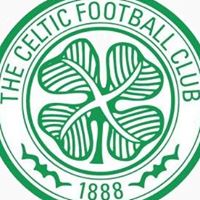Daniel E Mckay
age ~77
from Indio, CA
- Also known as:
-
- Daniel Eugene Mckay
- Eugene D Mckay
- Gene D Mckay
- Margaret Mckay
- Eugene Mc Kay
Daniel Mckay Phones & Addresses
- Indio, CA
- Ypsilanti, MI
- Ann Arbor, MI
Work
-
Company:Daniel W. McKay & Associates, PLLC
-
Address:
Ranks
-
Licence:Montana - Active
-
Date:1983
Specialities
Buyer's Agent • Listing Agent
Us Patents
-
Engine Torque Management Method With High Dilution Egr Control
view source -
US Patent:6367462, Apr 9, 2002
-
Filed:Sep 13, 2000
-
Appl. No.:09/661229
-
Inventors:Daniel Lee McKay - Brighton MI
Gary Arthur Nichols - Farmington Hills MI -
Assignee:Delphi Technologies, Inc. - Troy MI
-
International Classification:F02B 4708
-
US Classification:12356821, 123399, 701108
-
Abstract:An improved engine torque management control that coordinates engine throttle, spark and EGR under predefined highly throttled conditions so as to maximize the fuel economy improvement of EGR without degrading engine performance. Under the predefined conditions, EGR is increased to a level that maximizes the fuel economy improvement without causing combustion instability, and the throttle position and spark timing are controlled to compensate for the anticipated torque loss while increasing volumetric efficiency and reducing pumping losses. During idle and steady state cruising operation, EGR is increased, and engine throttle position is controlled to regulate the estimated engine output torque in accordance with the driver requested output torque. During transient torque increases, throttle control alone is used to regulate the output torque, while in transient torque decreases, the throttle position is maintained and spark timing is used to regulate the output torque.
-
Exhaust Gas Re-Circulation System With An Integrated Catalytic Converter
view source -
US Patent:6422215, Jul 23, 2002
-
Filed:Apr 14, 2000
-
Appl. No.:09/550544
-
Inventors:Daniel Lee McKay - Brighton MI
Gary Arthur Nichols - Farmington Hills MI -
Assignee:Delphi Technologies, Inc. - Troy MI
-
International Classification:F02M 2507
-
US Classification:12356811, 12356812
-
Abstract:An exhaust gas re-circulation (EGR) system is provided for use in conjunction with an internal combustion engine. The EGR system includes an intake manifold, an exhaust manifold, a passageway connected in flow communication between the exhaust manifold and the intake manifold, and an EGR valve interposed in the passageway for controlling re-circulation of exhaust gas into the intake manifold. In addition, an emissions control device (e. g. , a catalytic converter) for reducing exhaust emissions in the gas flowing into the intake manifold is connected in flow communication with the EGR valve.
-
System For Controllably Disabling Cylinders In An Internal Combustion Engine
view source -
US Patent:6619258, Sep 16, 2003
-
Filed:Jan 15, 2002
-
Appl. No.:10/046932
-
Inventors:Daniel Lee McKay - Brighton MI
Gary Arthur Nichols - Farmington Hills MI -
Assignee:Delphi Technologies, Inc. - Troy MI
-
International Classification:F02D 1702
-
US Classification:123350, 123198 F
-
Abstract:A system ( ) for controllably disabling cylinders in an internal combustion engine ( ) includes a throttle ( ) controlling air flow to an intake manifold ( ), a number of cylinder deactivation devices ( ) and an engine controller ( ) controlling fueling ( ), ignition timing ( ) and throttle position ( ). The controller ( ) is operable to activate only the minimum number of cylinders required to achieve a desired engine/vehicle operating parameter value, open the throttle ( ) to a computed throttle position, control ignition timing sufficiently to drive the current value of the engine/vehicle operating parameter to the desired engine/vehicle operating parameter value, and to then control the flow area of the throttle ( ) while also controlling ignition timing to maintain the current value of the engine/vehicle operating parameter near the desired engine/vehicle operating parameter value. The engine/vehicle operating parameter may be engine output torque, engine speed or vehicle speed.
-
Method And Apparatus For Cleaning An Oil Control Valve For An Internal Combustion Engine
view source -
US Patent:6718921, Apr 13, 2004
-
Filed:Jul 15, 2002
-
Appl. No.:10/195614
-
Inventors:Amanpal S. Grewal - Novi MI
Daniel Lee McKay - Brighton MI
Daniel George Gauthier - Clarkston MI
James Patrick Waters - Waterford MI
Jeffrey M. Pfeiffer - Walled Lake MI -
Assignee:Delphi Technologies, Inc. - Troy MI
-
International Classification:F01L 134
-
US Classification:123 9015, 123 9012, 123 9033, 123196 A
-
Abstract:The present invention is a method and apparatus to clean an oil control valve for use by an internal combustion engine. The invention causes the oil control valve to execute a cleaning routine when specific entrance criteria are met. This ensures cleaning of the valve to remove contaminants that are wedged, pinched or otherwise trapped on the valve, without interference in the operation of the engine.
-
Method And Apparatus To Control A Variable Valve System
view source -
US Patent:6758177, Jul 6, 2004
-
Filed:Feb 24, 2003
-
Appl. No.:10/373000
-
Inventors:Daniel Lee McKay - Brighton MI
Jeffrey M. Pfeiffer - Walled Lake MI
Amanpal S. Grewal - Novi MI -
Assignee:Delphi Technologies, Inc. - Troy MI
-
International Classification:F01L 134
-
US Classification:123 9015, 123 9017, 123 9016
-
Abstract:The present invention provides an improvement over conventional engine controls by providing a method and system that operates a variable valve system immediately subsequent to engine start, and disengages the variable valve system when engine performance is unacceptable. If the variable valve system is disengaged after engine start due to poor engine performance, a time delay occurs to allow the engine to create a sufficient amount of oil pressure to operate the variable valve system.
-
Method And Apparatus For Controlling A Variable Valve System For An Internal Combustion Engine
view source -
US Patent:6758179, Jul 6, 2004
-
Filed:Feb 26, 2003
-
Appl. No.:10/375513
-
Inventors:Daniel Lee McKay - Brighton MI
Jeffrey M. Pfeiffer - Walled Lake MI
Amanpal S. Grewal - Novi MI -
Assignee:Delphi Technologies, Inc. - Troy MI
-
International Classification:F01L 134
-
US Classification:123 9017, 123 9015, 123 9016
-
Abstract:The present invention provides a method and apparatus to control the rate of change of the variable cam phasing system during transient engine operating conditions. It does this primarily to maintain combustion stability. The invention controls the rate of change of the variable cam phasing system based upon the operating point of the engine, the desired operating point of the engine, and the rate of change of the variable cam phasing system necessary to maintain combustion stability.
-
Etc Control System And Method
view source -
US Patent:7434566, Oct 14, 2008
-
Filed:Oct 31, 2006
-
Appl. No.:11/590304
-
Inventors:Daniel L. McKay - Brighton MI, US
Gary A. Nichols - Farmington Hills MI, US
Carelton Williams Guillaume - Belleville MI, US -
Assignee:Delphi Technologies, Inc. - Troy MI
-
International Classification:F02D 11/10
F02D 9/08 -
US Classification:123399, 123337
-
Abstract:An electronic throttle control system and method which prevents obstructions from forming around a throttle plate during engine soak.
-
Rate Limiting And Balancing Control System For Dual Independent Camshaft Phasing
view source -
US Patent:7467611, Dec 23, 2008
-
Filed:Mar 20, 2007
-
Appl. No.:11/725768
-
Inventors:Daniel L. McKay - Brighton MI, US
James P. Waters - Waterford MI, US -
Assignee:Delphi Technologies, Inc. - Troy MI
-
International Classification:F01L 1/34
-
US Classification:123 9017, 123 9015, 464160
-
Abstract:A method for controlling dual independent camshaft phasers in an internal combustion engine. The method has three basic steps: a) first, determining if rate balancing between the two phasers is required; b) second, determining the optimal rate balancing commands; and c) third, applying the determined rate balancing commands to the appropriate phaser(s). In determining the rate balancing commands, there are three possible phaser options: the intake phaser requires priority; the exhaust phaser requires priority; or neither phaser requires priority. Lookup tables are stored in the engine controller for each option. When either phaser has priority, the other phaser is actuated after a delay based upon the position error of the priority phaser, generally at a lower phase rate. When neither phaser has priority, both phasers are actuated at a rate consistent with oil-delivery capabilities of the engine.
Name / Title
Company / Classification
Phones & Addresses
MCKAY'S CUSTOM BUILDING & CONTRACTING, LLC
COSHOCTON PROJECT LLC
Isbn (Books And Publications)

Lawyers & Attorneys

Daniel P. McKay - Lawyer
view sourceLicenses:
Montana - Active 1983

Daniel Mckay - Lawyer
view sourceOffice:
Daniel W. McKay & Associates, PLLC
Specialties:
Divorce & Separation
Personal Injury
Estate Planning
Probate
Car Accidents
Child Custody
Business
Child Support
Family Law
Contracts
Civil Practice
Personal Injury
Estate Planning
Probate
Car Accidents
Child Custody
Business
Child Support
Family Law
Contracts
Civil Practice
ISLN:
916269034
Admitted:
2000
University:
Boise State University, B.S., 1996
Law School:
J. Reuben Clark Law School at Brigham Young University, J.D., 2000
Resumes

Software Developer
view sourceLocation:
Washington, DC
Industry:
Information Technology And Services
Work:
Deque Systems, Inc Jan 2016 - Jan 2017
Technical Support Specialist
Mb Financial Bank 2015 - 2015
Access Administrator
Aegis Consulting 2015 - 2015
Instructor
Menlo Innovations 2015 - 2015
Software Developer
Technical Support Specialist
Mb Financial Bank 2015 - 2015
Access Administrator
Aegis Consulting 2015 - 2015
Instructor
Menlo Innovations 2015 - 2015
Software Developer
Education:
Eastern Michigan University 2013 - 2016
Bachelors, Computer Science Schoolcraft College 2010 - 2012
Associates
Bachelors, Computer Science Schoolcraft College 2010 - 2012
Associates
Skills:
Customer Service
Microsoft Office
Sales
Windows
Project Management
Security
Networking
Management
Sql
Troubleshooting
Cisco Routers
Nas
Virtualization
Server Administration
Communication
Team Building
Leadership
Microsoft Office
Sales
Windows
Project Management
Security
Networking
Management
Sql
Troubleshooting
Cisco Routers
Nas
Virtualization
Server Administration
Communication
Team Building
Leadership
Certifications:
A+
Network+
Ccent
Network+
Ccent

Daniel Mckay
view source
Daniel Mckay
view source
Daniel Mckay
view source
Technology Consultant At Bank Of America
view sourcePosition:
Assistant Vice President - Executive Technology Support at Bank of America
Location:
Charlotte, North Carolina
Industry:
Financial Services
Work:
Bank of America - Charlotte, North Carolina Area since Aug 2005
Assistant Vice President - Executive Technology Support
Bank of America - Charlotte, North Carolina Area Jul 2003 - Aug 2005
Level III Development Application Desktop Support
IBM - Charlotte, North Carolina Area May 1999 - Jul 2003
Technical Team leader / Helpdesk
T-Shirt City / California Shirt Sales - Charlotte, North Carolina Area Aug 1998 - May 1999
Jr. Network Administrator / Inside Sales / Part-time during College
Shred-IT (Mobile Paper Shredding/Recycling Co) - Charlotte, North Carolina Area Mar 1998 - Aug 1998
Outside Sales Representative
Assistant Vice President - Executive Technology Support
Bank of America - Charlotte, North Carolina Area Jul 2003 - Aug 2005
Level III Development Application Desktop Support
IBM - Charlotte, North Carolina Area May 1999 - Jul 2003
Technical Team leader / Helpdesk
T-Shirt City / California Shirt Sales - Charlotte, North Carolina Area Aug 1998 - May 1999
Jr. Network Administrator / Inside Sales / Part-time during College
Shred-IT (Mobile Paper Shredding/Recycling Co) - Charlotte, North Carolina Area Mar 1998 - Aug 1998
Outside Sales Representative
Education:
AMX University 2011 - 2011
Control Designer Certified, Audiovisual Communications Technologies/Technicians Cisco® Networking Academy Program 2000 - 2001
Completed and graduated this seven month class of hands on experience, Computer Systems Networking and Telecommunications Central Piedmont Community College 1999 - 2000
Associates of Applied Science, Information Systems / Network Administration and Support Concentration Prometric 1999 - 2000
640-507 Cisco® Certified Network Associate 2.0 (CCNA), Computer Systems Networking and Telecommunications Dale Carnegie Course 1997 - 1998
Public Speaking, Public Administration
Control Designer Certified, Audiovisual Communications Technologies/Technicians Cisco® Networking Academy Program 2000 - 2001
Completed and graduated this seven month class of hands on experience, Computer Systems Networking and Telecommunications Central Piedmont Community College 1999 - 2000
Associates of Applied Science, Information Systems / Network Administration and Support Concentration Prometric 1999 - 2000
640-507 Cisco® Certified Network Associate 2.0 (CCNA), Computer Systems Networking and Telecommunications Dale Carnegie Course 1997 - 1998
Public Speaking, Public Administration
Skills:
Production Support
WebSphere MQ
Mainframe
TSO
Release Management
Market Data
Sybase
Incident Management
IBM Utilities
CICS
DB2
Wintel
Windows 7
Windows Vista
iPad
Apple
Microsoft Office
Motorola Hardware
Motorola Assembly
Two-way Radio
McAfee
Cisco Technologies
Telepresence
BitTorrent
HP
Printers
Audio Conferencing
Video Conferencing
IP Phones
Blackberry
CCNA
Public Speaking
Communication Skills
VoIP
Routers
Switches
AMX
WebSphere MQ
Mainframe
TSO
Release Management
Market Data
Sybase
Incident Management
IBM Utilities
CICS
DB2
Wintel
Windows 7
Windows Vista
iPad
Apple
Microsoft Office
Motorola Hardware
Motorola Assembly
Two-way Radio
McAfee
Cisco Technologies
Telepresence
BitTorrent
HP
Printers
Audio Conferencing
Video Conferencing
IP Phones
Blackberry
CCNA
Public Speaking
Communication Skills
VoIP
Routers
Switches
AMX
Interests:
Hockey, Football, Lacrosse, Basketball, Baseball, All Sports, Fishing, Golfing, Motorcycles, Exercise, Mountain Biking
Honor & Awards:
Nationally recognized Public Speaking Course (12 weeks)
Award for "Most Effective Speech"
United States Military - U.S. Army - Honorable Discharge

Technical Director At Panacea Pharma Projects Ltd
view sourcePosition:
Technical Director at Panacea Pharma Projects Ltd
Location:
Isle of Man
Industry:
Pharmaceuticals
Work:
Panacea Pharma Projects Ltd - Isle of Man since Jul 2013
Technical Director
Panacea Pharma Projects Ltd - Isle of Man Jul 2012 - Jun 2013
Head of Pharmacovigilance
Panacea Pharma Projects Ltd Oct 2010 - Jun 2012
Pharmacovigilance Manager
Molnlycke Health Care Apr 2005 - Oct 2010
Pharmacovigilance Associate / Team Leader
Health and Safety Executive Jan 2002 - Apr 2005
Regulatory Scientist
Technical Director
Panacea Pharma Projects Ltd - Isle of Man Jul 2012 - Jun 2013
Head of Pharmacovigilance
Panacea Pharma Projects Ltd Oct 2010 - Jun 2012
Pharmacovigilance Manager
Molnlycke Health Care Apr 2005 - Oct 2010
Pharmacovigilance Associate / Team Leader
Health and Safety Executive Jan 2002 - Apr 2005
Regulatory Scientist
Education:
University of Hertfordshire 2006 - 2010
PgDip, Pharmacovigilance University of Liverpool 1996 - 1999
BSc (Hons), Pharmacology
PgDip, Pharmacovigilance University of Liverpool 1996 - 1999
BSc (Hons), Pharmacology
Skills:
Pharmacovigilance
Regulatory Affairs
Pharmaceutical Industry
Drug Safety
Lifesciences
Medical Devices
Regulatory Requirements
Pharmacology
ISO 13485
CAPA
Regulatory Affairs
Pharmaceutical Industry
Drug Safety
Lifesciences
Medical Devices
Regulatory Requirements
Pharmacology
ISO 13485
CAPA

Daniel Dblock Mckay
view source
Daniel Scott McKay
view source
Daniel McKay
view source
Daniel Mckay
view source
Daniel John Mckay
view source
Daniel N Mckay
view source
Daniel Randall Mckay
view source
Kyle Daniel McKay
view sourcePlaxo

Daniel McKay
view sourceManager Gasoline Direct Injection at Delphi

Daniel McKay
view sourceEdmonton, Alberta

Daniel mckay
view sourceApplied Materials
Classmates

Daniel McKay
view sourceSchools:
Southington High School Southington CT 1950-1954

Daniel McKay
view sourceSchools:
Westmoreland Christian Academy Greensburg PA 2001-2004
Community:
Alicia Roy, Rachel Territ, Brian Evans, Crystal Evans

Daniel McKay
view sourceSchools:
Camden County High School Kingsland GA 1997-2001
Community:
Jennifer Sheppard

Daniel McKay
view sourceSchools:
McCullough High School The Woodlands TX 1983-1987
Community:
Cary Mcfarland

Daniel McKay
view sourceSchools:
St. Agnes School Chicago IL 1979-1987
Community:
Pam Scoggins, Pat Jahn, Bob Ryan, James Spencer

Daniel McKay
view sourceSchools:
Kirkland Junior High School Kirkland WA 1960-1963, Lake Washington High School Kirkland WA 1963-1964

Daniel McKay
view sourceSchools:
Elsberry High School Elsberry MO 1969-1973
Community:
Carol Riffle, Chris Johnston, Paula Tobias

Daniel McKay
view sourceSchools:
Conrad High School Conrad MT 1994-1998
Community:
Michael Ellison, Clayton Duncan
Flickr
Googleplus

Daniel Mckay
Education:
Pennsylvania State University - Journalism, Penn State Behrend

Daniel Mckay
Work:
University of Maine - Instructor (2009)
Eaton Peabody - Shareholder (1977)
Eaton Peabody - Shareholder (1977)

Daniel Mckay
Education:
Felician College

Daniel Mckay

Daniel Mckay

Daniel Mckay

Daniel Mckay

Daniel Mckay
Youtube
Myspace
Get Report for Daniel E Mckay from Indio, CA, age ~77





















